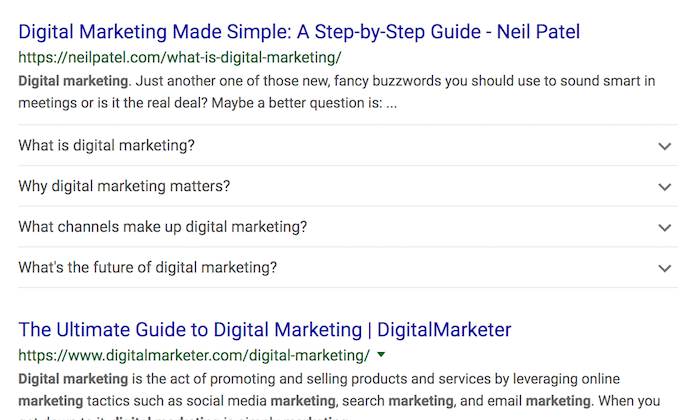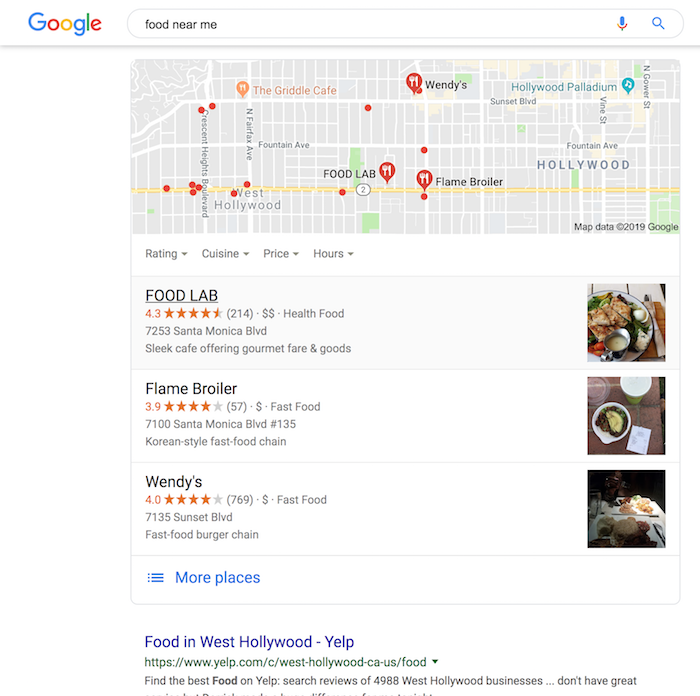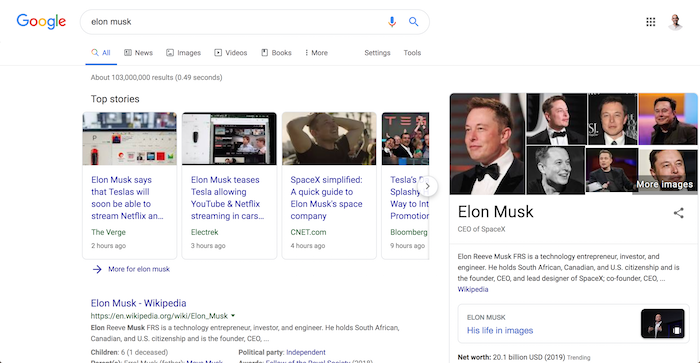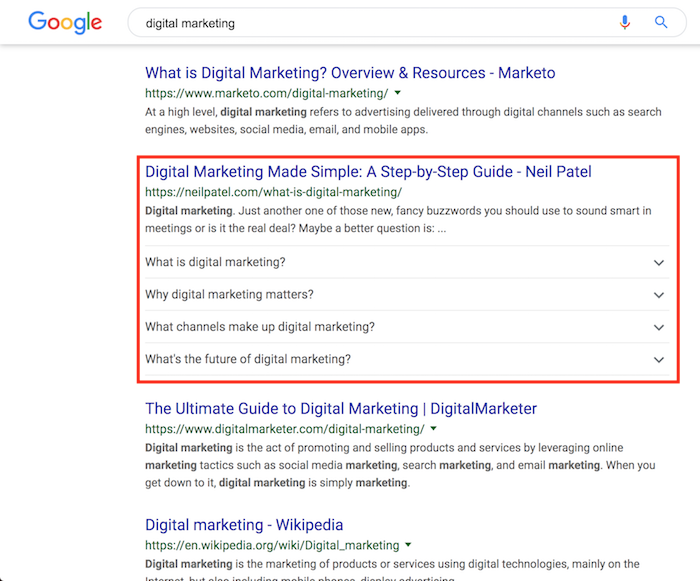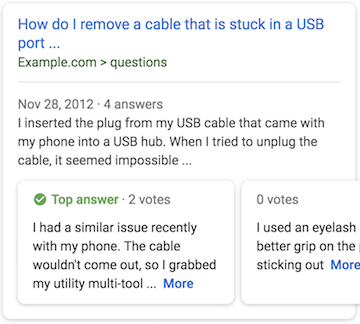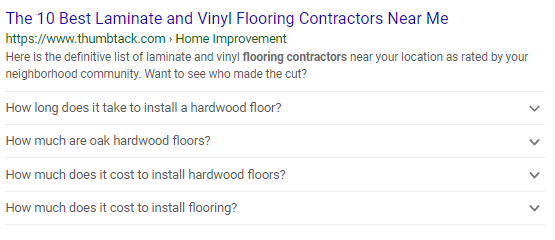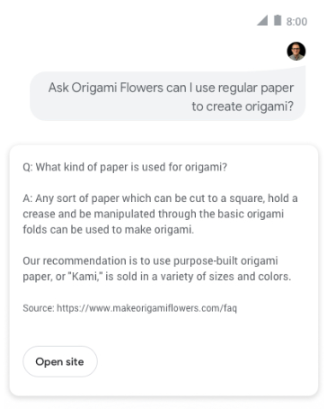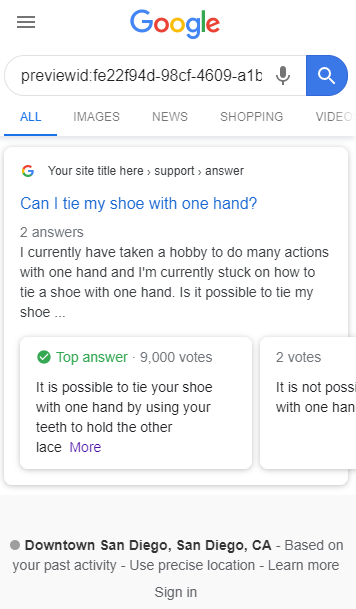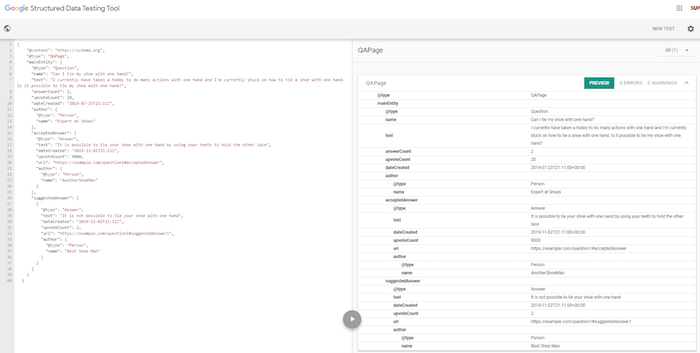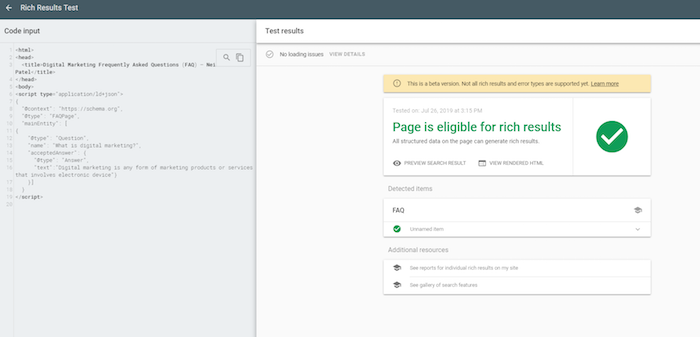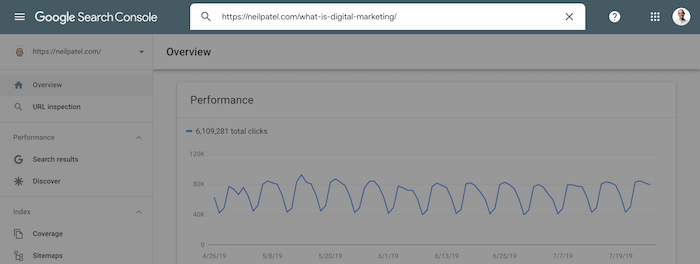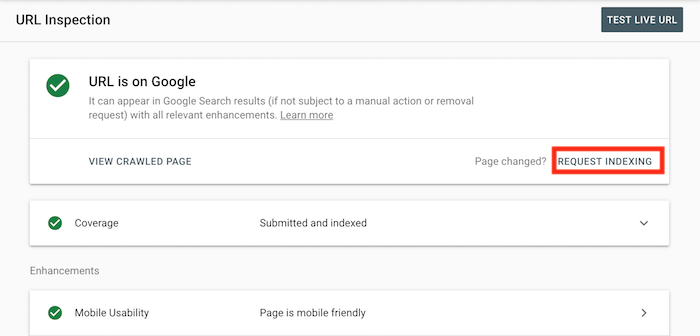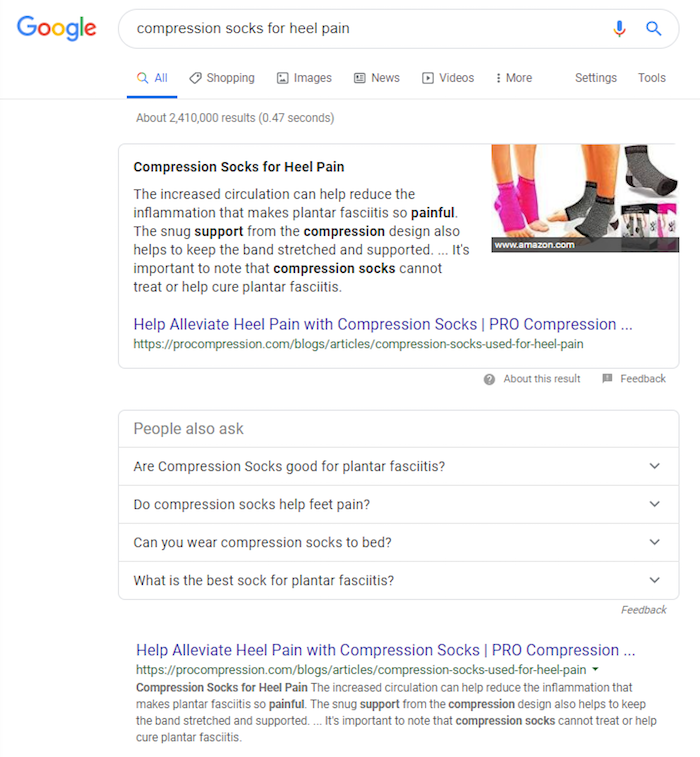Transcript of Overcoming Objections in Sales written by John Jantsch read more at Duct Tape Marketing
Transcript

John Jantsch: Today’s episode is brought to you by Break Through The Noise, the new book by Tim Staples, Co-Founder and CEO of Shareability. In his book Tim reveals his secret sauce for how to capture the attention of millions of people online, without spending millions of dollars.
John Jantsch: Hello and welcome to another episode of the duct tape marketing podcast. This is John Jantsch and my guest today is Jeb Blount. He is a sales acceleration specialist, founder of Sales Gravy and the author of a couple books, Fanatical Prospecting, I think we had him on here for, and then also, the book we’re going to talk about today, Objections: The Ultimate Guide for Mastering the Art and Science of Getting Past No. So Jeb, welcome back.
Jeb Blount: Oh, thank you. I’m glad to be back on. I appreciate you having me on.
John Jantsch: So, objection seems like a pretty specific part of the sales process. So let’s start out there. Why a book just on that aspect?
Jeb Blount: Well, if you think about most sales books, there’s a little part in the very back of every sales book on objections. There are very few books that have been written on objections and even in training that we deliver and that corporations deliver to their people, objections kind of take a back seat. But, when we think about objections and what objections are, you’re dealing with objections all the way through the entire sales process.
Jeb Blount: From the moment that you get someone on the telephone and you’re prospecting, they may tell you, they don’t have time for a meeting to throwing out red herrings in the middle of your sales process that take you off track, to micro-commitment objections. Getting them to advance to a next step. Then finally, buying and selection commitment objections.
Jeb Blount: So, no matter what you do, no matter what you sell, no matter how you sell it, there’s a great democracy in objections and objections are everywhere in the sales process, but we just haven’t addressed it. What I realized is that when I was dealing with entrepreneurs and I was dealing with people in marketing and I was dealing with people in sales and even dealing with people in nonprofit, almost all the questions that they ask about me is, “What do I do when someone tells me no?”
Jeb Blount: That’s why I made the decision to write this book and to really break down the science of objections, the science of why they hurt so much and why do buyers give us rejections. Then creating frameworks that allow people, in the moment, to deal with those objections, get past them and keep their deals advancing.
John Jantsch: Yeah, because for a lot of people, objection is really rejection. I mean, they don’t get past the early on stages and that’s where people give up. I think a lot of what you’re saying is, you got to expect this stuff and you got to look for it and you have to overcome it, maybe multiple times. I think that’s probably the part that makes… I don’t know how to say this the right way. That’s the part that makes people not like selling so much, but it’s also… Isn’t it the part that people get really good at it, enjoy the most?
Jeb Blount: Yeah, I think you’re right. So, persistence is a virtue, especially in sales and in business. I opened the book with the story about a guy that called me 71 times and ended up selling me a software program that changed my business. It changed the trajectory of our company. It helped us grow very fast and if he hadn’t been so persistent, I probably wouldn’t have bought it. So, he really helped me out.
Jeb Blount: I tell the story in the book where I called Fujifilm, was a client that I was looking to do business with. I called them over 50 times until they finally met with me. Which I think is what people miss in this, is when I showed up, they had their head of sales in the meeting and the head of sales was trying to hire me to come work for their company because he was so impressed with my persistence.
Jeb Blount: So, when we’re talking about persistence, in a lot of cases, we’re talking about the objections that you get really early on. Which are the harshest objections and they can be rejection that you get. So, when you call someone up asking for time, you’re interrupting their day and you’re asking for the one thing they don’t have any of and that is time. Those particular objections are the things that, I think make people run from sales the most.
Jeb Blount: Those aren’t the only objections you get, but those are certainly the harshest objections. The thing about objections is that they aren’t necessarily rejection. Sometimes they are, especially when you’re prospecting. But our brains treat an objection like it’s a rejection because we perceive it to be that way. In the worst cases, we anticipate that we’re going to get rejected. So we never even make the call or make the approach because we start worrying about what’s going to happen when someone tells us no.
Jeb Blount: In the book itself, what we really deal with is that feeling that you get of rejection, whether it’s anticipated, whether it’s real or whether it is perceived. That feeling that you have is much more biological than psychological. So, it’s important to be aware of where it comes from, so that in the moment, you can rise above the emotion that you feel and choose your response. That by the way, is the real key of getting past the objection and getting to what you want.
John Jantsch: Well, and I’m going to guess, I could be wrong, but that person that called you 71 times believed in the value that you could receive and that’s what kept them coming back. Am I way off base there?
Jeb Blount: Absolutely. Well, I think two things. One, he had absolute conviction in the quality of the product that he was selling and he was right about that. It is a high quality software and also, he had done a really good job of targeting. So, he had done a very good job of deciding which companies were the best fit for that product and my company Sales Gravy, we’re a fairly well-known sell training company. We work across the globe. We have a high profile. So, one of the things for him was, if I can get Sales Gravy to buy this, then I can get a lot of other training companies to buy this because I can tell them that Sales Gravy’s my client. I knew that was part of what he was doing and he was up front about that. About what an important prospect we were to him.
Jeb Blount: So, when you have the right prospect, where you know that what you’re selling is a fit and you know that you really help them, then that gives you that emotional reason to keep facing the fact that you’re getting knocked down, knocked down, knocked down because That told him to go away a dozen times. It allows you to do that.
Jeb Blount: Thankfully, he had so much conviction in what he was selling that he didn’t stop and it’s made all the difference for us as an organization. I can tell you straight up, the software that he sold us has helped us double the size of our company three years in a row. That’s how powerful that was.
John Jantsch: So, let’s focus on the prospecting part, which a lot of that was what he was doing. For a lot of people, that’s the hardest part. I mean, 90% of people couldn’t get past that because it’s so easy. It’s like, “No, and I don’t have time for you.” Click. To the buyers defense a little bit, I mean, I get those calls all the time and I just don’t have the time to invest in determining a lot of times, as I suspect you did, that that software was a good fit. No matter, all the promises, it like, “Yeah, I get that five times a day. What if it doesn’t?” So, I can’t take the time. So, how do you get past the fact that a lot of people just see that as you interrupting?
Jeb Blount: Well, you are interrupting. I mean, it’s just the fact of the matter. You’re interrupting and you’re asking them for the one thing that they don’t have any of, and that is time. So, there’s a couple of things. One of the things that Richard did really well in this situation is that he built familiarity. So, the last time that he got me on the telephone, I knew who he was. I’d heard his voice. I’d seen dozens of emails. He stalked me on LinkedIn. He called me and left me voicemails.
Jeb Blount: When I finally had a moment, I was in the situation where I couldn’t say, “No, I’m not going to give you time.” Because honestly, as a human being, with some level of empathy, he had just earned the right to have the conversation. The second thing that he did was, he was able to change his message. Because he left me so many voicemails, I heard different messages. So, he built these little commercials for me along the way.
Jeb Blount: So for him, he did that. I mean, he got to the point where I knew who he was and he had earned the right and part of like you said, “Do I know whether or not this is really worth my time?” Part of that is that the salesperson keeps showing up over and over and over again. Because if you think about it, most sales people hit the no once and they never call back again and I see that everyday in corporate America. When we’re working with people, working with a sales person, the question they ask is, “How many times should I call?” The answer is, that they currently have is, “I call once, they tell me, no. I never call back again.”
Jeb Blount: A great example is, I was working with this small company up in New York City and they sold advertising into restaurants. So, I was out with their sales people on the street in New York City, cold calling restaurants. We’re walking door-to-door, walking in and interrupting the day of restaurant managers in New York City, the hardest place in the world to sell. When we walked in, they told us to go screw ourselves.
Jeb Blount: We got told no in about 60 different languages and then, we went back the next day and went back the next day and went back the next day and it took about five times of walking in and them seeing you before they would give you a second look. Then they would say, “Yeah, get out of here but come back tomorrow.” And you knew you had cracked them and then, you’d come in the sixth time and then, they would give you a few minutes. You go in the seventh time, you got a meeting because their filter for whether or not it’s worth their time to invest in you was basically predicated on, did you have the chops to keep showing up over and over and over again?
Jeb Blount: I did the same thing. I love salespeople it’s what I do for a living. But I tell salespeople to go away all the time and it’s the ones that keep at it that eventually will at least get in, or I will at least look at their message. If I look at their message and I determine it’s not right for me, I’ll be respectful enough to tell them why it’s not the right time or right for me, rather than just brushing them off with, “I don’t have time.”
John Jantsch: Yeah. So in a way, you’re asking them to invest in you, before you’ll invest in them and I think that’s a great way to look at it. So, we talked about the prospecting one. You mentioned red herrings and micro-commitments and the fourth one, kind of that buying commitment. So I guess maybe, just briefly state what those are and then, I’d love for you to talk about some tactics for kind of turning those around.
Jeb Blount: Sure, so red herring objections are really not… they’re not real objections. But typically, when we’re in these conversations, sales conversations, especially for entrepreneurs, we feel nervous. A lot of it is because we have everything on the line and we feel a little bit vulnerable. In those initial meetings, what will happen is, you’re having a conversation with someone and they’ll say, “Well listen, I can’t talk anymore until I know how much it costs.” Or, “I just want you to know I’m not buying today.” They’ll throw something like that out really early in the conversation and what happens is we end up chasing that and we burn all the time that we have with them, dealing with something that’s not really a price objection. It’s just what they say. They don’t really have anything else to say to you.
Jeb Blount: So, it’s important in those situations, that you acknowledge it. So, the way I acknowledge anytime I get a red herring, is just write it down on a piece of paper, ask them if there’s anything else. Then I moved directly into my conversation, which usually sounds like this. I’s say, “If it’d be okay with you, let me ask you a few questions about you and then, we can talk about what we do and you and I can determine from there, whether or not it makes sense for us to keep talking.”
Jeb Blount: So, I use this process where I just, I pause for just a moment, acknowledge it, write it down and then, I ignore it. Most of the time red herrings never, ever come back up again and sometimes they’re important. Write it down, come back to it later. But don’t allow a red herring to disrupt your conversation. Maintain control and keep the meeting moving the way you want it to move.
Jeb Blount: Micro-commitment objection is really simple. All of sales is a set of commitments. So prospecting is asking for time. Sales is asking for commitments and those commitments are small micro-commitments along the way. So, for example, if I’m selling something and the best way that I can determine what to sell you is to go walk through say, your warehouse or walk through your building or take a look at your data or spend a day in the life with one of your AR clerks, whatever the case may be. If I’m doing that, I want to ask for micro-commitment and the more micro-commitments I can get along the way, the more my buyer’s invested in the process. Which means it’s more likely that they’re going to see it through to an outcome and my opportunities not going to stall.
Jeb Blount: So, I’m constantly asking people for my micro-commitments at test engagement and make sure that we’re moving forward. But from time-to-time they’ll say, “No.” They’ll say, “I don’t understand why we need to go do a tour of my warehouse. I mean, it’s just a warehouse. Why can’t you just send me a quote?” Or, “I don’t know why we would need to do that.” Or, “Why don’t you just email me the proposal and then, I’ll call you and we can meet later versus setting up a meeting with you.”
Jeb Blount: The thing about micro-commitments is all you have to do is just explain the value. These are real, low-key objections. They’re not harsh. They’re rarely rejection. We get a little bit flustered, but all you have to do is explain the value. So if someone says, “Look, I don’t know why we need to do this.” I say, “Listen, the reason that this is important is because the way I work as an organization is that every solution that I build is custom to my client’s unique situations. Until I get to know you, it’s going to be impossible for me to put together a blueprint for how we would serve you. All I’m going to need is about 15 minutes of your time to go through this information. So how about Thursday at two?” Really simple. If you can give a good explanation, they will rarely tell you no.
Jeb Blount: Then finally, they’re buying commitment objections and buying commitment objections are just people’s… They’re concerned about making a mistake. It’s their fear of taking risks. It’s their attachment to the status quo. What I’m doing now, even though it’s not perfect, it’s probably going to be better than taking a risk of change.
Jeb Blount: With micro-commitment or with buying commitment objections, it’s really about building your case through discovery, making sure that you’ve done all your work along the way. You really understand what’s important to them, why they would do this and it’s relating to them as a human being. Making sure that you are clarifying exactly what they mean. So, if someone says, “Your price is too much.” My question’s always. “How so? Help me understand that.” Because sometimes, it’s maybe the startup cost but not the ongoing cost.
Jeb Blount: Then the key here is, with buying commitment objections is recognizing that buying commitment objections almost always come from a place of fear. It’s just natural for human beings. We’re adverse to risk and along… as we’ve gone through our lives, when we avoid risk, we have a tendency to stay alive, so it’s part of our makeup. So, you have to minimize their fear while maximizing the future outcomes, while showing them what they’re going to get. The best way to have the ammunition that you need in a buying commitment objection is to have done a good job in the sales process doing deep discovery and built a good business case.
John Jantsch: Just to let you know, this episode is brought to you by Break Through the Noise, the new book by Tim Staples. If you’re a marketer, an entrepreneur or a small business owner and you have a limited budget to market to and connect with your customers, you need break through the noise. Tim Staples shares the nine essential rules for mastering the art of online storytelling and provides tools to help you outsmart the social media algorithms, increase your share of voice and build your brand. Breakthrough the Noise by Tim Staples is on sale now, wherever books are sold.
John Jantsch: So you spend a good chunk of the book talking about asking as a skill and how and why. I think that’s a part that most sort of beginning salespeople miss, is that they want to show up and talk about their stuff and a lot of times, we’re not even giving the buyer a chance to object to anything because we want to talk about ourselves. So, how do we develop this habit of making sure that we’re asking plenty of questions before we start trying to sell anything.
Jeb Blount: Well, I think first of all, you’re exactly right. You’ve got to ask questions and do discovery. The easiest thing to remember is this, when you ask for the sale, if you haven’t asked questions to begin with, you’re going to be dealing with price. So, you’re going to go straight to the bottom, deal with price because that’s the only thing that differentiates you. When you ask great questions, when you get out of your own way, rather than just pitching and explaining and telling, when you do that and then you go, “You want to buy?” The only way they can buy from you is based on you lowering your price because you created no differentiation from your competitors. So that’s one part of asking.
Jeb Blount: One is asking questions. Open-ended questions, artful and strategic questions that provoke awareness in building your business case. The problem with salespeople, more often than not with asking, is they don’t ask for what they want. So for example, if I want to come do a tour of your facility, I have to ask for that. If I want to sell, I have to ask you to do business with me. If I want time, I have to ask you for time.
Jeb Blount: The problem is, is when we ask, it creates this deep sense of vulnerability. We ask with confidence that we want something, then the person could tell us, “No.” We begin anticipating that we’re going to get rejected and therefore we don’t ask at all. What we do is we sit and wait for the prospect to do the job for us. That they’re going to somehow come to their senses and close the deal or give us time or what have you and it just doesn’t work that way.
Jeb Blount: One of my favorite quotes from Jim Rome is that, “Asking is the beginning of receiving.” I mean, if we want a deal, we have to ask first. So, asking is the most important discipline in sale, asking for what you want. If you want to get something you have to ask for it. We start the book that way because when you ask, you are going to get told no. When you ask, you are going to get rejected. Those things are true and when you begin anticipating that or when you change your behavior because you don’t want to feel the pain of rejection, all of a sudden you stop asking or you ask in a way that is so passive and insecure, that you’re never going to get what you want.
Jeb Blount: So, what you need is first of all, to understand where that pain comes from so that you can be aware of it. Awareness is the mother of change. But, next you have to have a set of frameworks, so that when you ask and you get the objection, when it happens to you, that you can rise above the emotion. What I teach people when I’m working with them on objections is that the emotion that you feel about being rejected, because it’s not comfortable. Nobody likes to feel that way. That happens without your consent. You don’t get to choose the emotion. The only thing you can choose is how you respond to that, what you’re going to do next, how you rise above it.
Jeb Blount: One of the really simple mechanisms that we teach people is something called the ledge and it’s what neuroscientists call the magic quarter second. So, when you get someone telling you no, an objection, that happens at the… your response the emotional level and it kicks off something called fight or flight, which changes your physiology and it changes the way that you deal with it and it makes it really hard to think.
Jeb Blount: So the ledge, this magic quarter second, gives you just a moment to get your neocortex or your thinking, rational brain in executive control over your response. So, for example, if I asked you for time and you said, “Jeb, I’m too busy today.” My ledge in this situation would be, that’s exactly why I called because I figured you would be. I say that every single time. But just that simple moment of having something that I say and respond to, anytime someone says that to me. Someone says, “Your prices are too way too high.” I always say, “How so?”
Jeb Blount: But because I have that, it gives me a moment to think and if I can have that moment to think, I can get out of the emotional state that I’m in, that makes it difficult for me to respond and get back into a rational state that allows me to be in control of my emotions and therefore, deliver a response that helps me get past the objection.
Jeb Blount: The one thing that you must take to the bank and understand about your interactions with people in a sales conversation, is that the person in that conversation that exerts the greatest amount of emotional control is the person who has the highest probability of getting the outcome that they desire?
John Jantsch: Yeah, and I think it probably, also has a little bit of impact of disarming the sort of knee jerk reaction. Like, “I’m too busy. You’re priced too high.” I mean some of that’s just defense, isn’t it? If we aren’t prepared to sort of deflect that defense mechanism, we’re never going to get a chance to show the value we can bring.
Jeb Blount: Yeah. I think it’s probably, when… We think about that more, “Let’s focus on disrupting the pattern.” So, when someone says, “I’m too busy.” Typically, that’s just their… It’s a reflex response. That’s why I call them buyer scripts, right? So, it’s just what they say. So, if you say, “I’m too busy.” I’m going to say, “That’s exactly why I called, because I figured you would be.” There not expecting that. I mean, they’re not expecting a salesperson to say that. They’re expecting me to argue with them or to say, “What’s a better time to call you.” I just say, “That’s exactly why I called because I figured you would be and all I want to do is find a time that’s more convenient for you.” I say that every single time. It’s got about a 70% probability of getting the person to tell me yes.
Jeb Blount: So, in that particular case, I’ve got a stock response. I was just working with a rep who is selling into CFOs and he sells software that helps them reduce their SGNA costs and he was having a hard time dealing with it, when the CFO said, “I’m not interested.” Because they all say, “I’m not interested,” because they’re too busy. His response, the way that he broke that up, he said, “That’s exactly what I thought you’d say because every CFO I call tells me they’re not interested, before they learn that we can rapidly reduce their SGNA costs and give them the ability to invest that money in places that grow the business.”
Jeb Blount: The week before he was using that turn around, he got four meetings. The week that he started using the turnaround, he got 18 meetings. So, it was just breaking through that little bit of resistance and doing something that allowed him to rise above the emotion and then, disrupted the pattern of that CFO, “I’m not interested.” That moved them to a place where they were willing to meet with him and that’s when he began… could begin to make the case because you can’t make the case on a simple prospecting call. It’s moving fast. You interrupted their day. You need to get the meeting to have that conversation.
John Jantsch: All right, I’m going to end on one you can probably swat right out of the park. But I’m going to ask you this question because I’m sure that lots of listeners out there and lots of folks who come to you probably have this. So you have a story in there that yes has a number and you essentially say, “If you ask…” Like a lot of salespeople, you have to ask enough people in order to get to yes with somebody. But here’s my question, so you had the number in there 11. You asked people to sing, Mary Had a Little Lamb and you said, typically somewhere around 11… by the 11th person, you finally got somebody to do it. So, let me ask you this, does that mean though that 10 people were damaged along the way?
Jeb Blount: No. I mean, the story is, I was in New York City. I was more damaged than not because I was usually getting F you, when I asked the question. So, I was the one that was getting damaged. But most people answer… I asked them… They went on with their life. I mean, they may have at dinner said, “Hey, this crazy guy on the street asked me to sing, Mary Had a Little Lamb into a camera.” But more often than not, they just forget, they have no idea.
John Jantsch: Let me make sure I focus on that. You use that as an example. So let’s say, just in the cold calling environment is what I’m really asking. So yeah, you finally find somebody who will meet with you, but the 10 people… And I’m saying damaged, that’s harsh. But I mean, are the 10 people that you interrupted, had a bad experience?
Jeb Blount: Well, only if you’re a total schmuck. But other than that, no. A great example of this is, I was working with a group up in Atlanta and we were doing cold calls. I was working, we’re working with them doing cold calls. The fourth person I called was just the meanest, most awful human being. She was so ugly to me and I’ve made thousands of calls, but she really hurt my feelings. Then I was even thinking that this is Atlanta, Georgia. So usually, you get told no nicer than you do in New York City.
Jeb Blount: So, it was bothering me, but I couldn’t flinch, because I’m in front of a bunch of reps that I’m training how to do cold calls. So, I kept on going, but finally it was bothering me so bad, I went back to the top of the list and I called her back 30 minutes after I’d called her the first time. When she answered the phone, I did exactly the same thing that I’d done the first time. And she said, “Yeah, come on by on Wednesday.” She didn’t even remember that I called her. I don’t know what she was in the middle of. I don’t know what was going on, but that happened.
Jeb Blount: My son called me earlier this week and and said… he said, “You’re not going to believe this.” He said, “I talked to the CEO two weeks ago, who told me that to go away. I’m never going to do business with you and oh, by the way, I’m busy for the next six years. So, don’t ever call me back again.” He said, “I was sitting there and I was thinking about it. I’m like, I’m going to call the guy back.” So he said, “Two weeks later, I called him back.” He said, “I changed my message up just a little bit.” And he said, “I ended up getting the meeting.”
Jeb Blount: It’s like, that’s what happens to people all the time. Is that you get off the phone thinking that that person is still thinking about you but they’re not. It’s probably no different than, someone cuts you off in traffic and you drive on and you’re so pissed off at them and you’re thinking about them grinding your teeth and thinking about all the things you can do with retribution and meanwhile, that person is driving on. They haven’t given you a second thought. They’re just going on with their day. All you are is an inconvenient interruption and they forgot about you the minute that you got off the phone. Unless of course, I mean, if you’re just a total jerk on the phone with them, they may not forget you, but that’s just so weird for sales people to do that.
Jeb Blount: Usually, I try to get past an objection a couple of times. If I don’t, I hang up and I move on and I call them back a couple of days later. So you’re not going to cause any damage calling people, doing prospecting, having conversations. More often than not, you’re going to create respect because you’re willing to call back. Which, I think is essentially, what happened to my son when the CEO realized that this kid who’s 21 years old wasn’t willing to back down. That CEO had deeper respect for him and was willing to give him 20 minutes of his time.
John Jantsch: Jeb, where can people find out more about you and Sales Gravy and any of your books?
Jeb Blount: Absolutely. All my books, I’ve written 10 books, they’re on Amazon. So, you can grab those, Amazon, Barnes and Noble. Most bookstores, most airports you’ll find my books. Salesgravy.com is my flagship website. We have thousands and thousands and thousands of free resources there that you can grab. You can get my podcast, along with this one. Because this is the podcast Mark and I listen to every single week, but you can grab my podcasts on all the major podcast providers, Sales Gravy, G-R-A-V-Y, is the easiest way to pop that in. YouTube channel thousands are… Thousands, about four or 500 videos there, I think. Then, you can catch me on all the major social networks. I’m @salesgravy, wherever you go.
John Jantsch: Well, Jeb it was great catching up with you and hopefully, we’ll run into you there soon out on the road.
Jeb Blount: Thank you, sir. Thank you.
from Duct Tape Marketing https://ift.tt/2OwNLxz
via IFTTT



